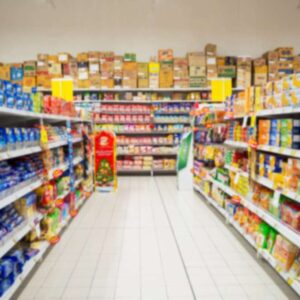
“Lights Out” Method SLASHES Diabetes Risk
We all know that diet and exercise are crucial in preventing type 2 diabetes.
But what if I told you that making a simple change to your sleeping environment could ALSO significantly dial down your risk?
A groundbreaking new study suggests that this easy, no-cost strategy could be a powerful tool in our diabetes prevention toolkit.
Let’s shed some light on this fascinating research…
I’ve warned you about the dangers of light exposure at night before.
Artificial light negatively affects hormone levels and disrupts circadian rhythm. So, it’s no surprise it’s implicated in a laundry list of health issues ranging from high blood pressure to thyroid cancer.
I’ve even cautioned you about the link between nighttime light exposure and poor blood sugar control before.
Now, a team of scientists, led by Professor Andrew Phillips from Flinders University in Australia, conducted the largest study to date on how nighttime light exposure affects our risk of developing type 2 diabetes.
Their findings, published in the journal The Lancet, are illuminating, to say the least.
The researchers equipped 85,000 volunteers with wrist-worn light sensors, like high-tech watches that measure light instead of steps. The participants wore the sensors for a week, going about their normal lives. Then, the scientists tracked their health for the next eight years.
Here’s what they discovered…
The volunteers who were exposed to the MOST light between 12:30 AM and 6 AM were 1.5 times more likely to develop diabetes compared to those who slept in darkness.
That’s about the same increase in risk you’d get from having a family history of diabetes!
You’re probably wondering how much light are we talking about here.
Well, about half of the people in the study experienced very low light levels at night—less than the glow of a candle. These folks had the lowest risk of developing diabetes.
On the other hand, the 10 percent of participants exposed to the most light—equivalent to dim overhead lighting—had the highest risk.
Your body was designed to sleep in total darkness. So, light at night affects your body’s internal clock, or circadian rhythm.
This 24-hour cycle regulates many of your bodily functions, including how you process sugar and produce insulin. When you’re exposed to light at night, it throws this delicate system out of whack.
Your body’s production of the hormone melatonin is affected as well. Melatonin helps us sleep, but it also influences our body’s insulin response. Nighttime light exposure can reduce melatonin levels, messing with your metabolic system and eventually sending your diabetes risk rising.
To create a healthier light environment, start here…
- Power down screens. The blue light from phones, tablets, and computers can be particularly disruptive. Plus, cover any indicator lights on electronics that must be in the room.
- Invest in blackout curtains or an eye mask to block out external light you can’t get rid of.
- If you absolutely need a nightlight, opt for a red light, which is less likely to interfere with your circadian rhythm.
Remember, while managing nighttime light exposure is a promising strategy, it’s not a silver bullet. A healthy diet, regular exercise, and maintaining a healthy weight are still crucial in preventing type 2 diabetes.
P.S. A WARNING for Night Owls!
Source:
Daniel P. Windred, Angus C. Burns, Martin K. Rutter, et al., Personal light exposure patterns and incidence of type 2 diabetes: analysis of 13 million hours of light sensor data and 670,000 person-years of prospective observation, The Lancet Regional Health, Volume 42, 100943, July 2024
Written By Dr. Scott Olson, ND
Nearly 25 years ago, failed mainstream medical treatments left Dr. Olson in constant pain – and his health in ruins. And that’s when he did something REVOLUTIONARY. He began his career in medicine – and dedicated his life to uncovering the true, underlying causes of disease.
Through his innovative medical practices in Tennessee and Colorado, Dr. Olson has helped cure countless seniors from across America of arthritis… heart disease… diabetes… and even cancer. All without risky prescription drugs or painful surgeries.
View More Free Articles
Stop Obsessing Over Diet Trends
Can we stop with the endless diet debates already? Every other week there’s a new headline shouting about which diet is best for weight loss, heart health, or diabetes. Paleo, keto, low-carb, high-protein… it’s exhausting. And now, a new meta-analysis is out comparing the Mediterranean diet, the DASH diet, and something called AHEI (that’s “Alternative...
A New Reason to Ditch Processed Junk
If you’ve ever walked the inside aisles of your local grocery store and thought, “This is all just junk,” your instincts were spot on. A new study published in the journal Thorax just added another red flag to the list of dangers linked to ultra-processed food—a 41 percent higher risk of lung cancer. That’s right....
When Being Winded on Stairs Is Serious (And When It Isn’t)
I had an athlete visit me recently because he experienced shortness of breath while climbing stairs. He is in great shape, so he was worried about what it might mean. “Doc,” he said, “I run five miles three times a week. Why am I huffing and puffing after two flights of stairs?” His concern is...
Study EXPOSES Hidden Danger Lurking in Your Car
We think of our homes and cars as safe havens. But according to a startling new study, they may be flooding your lungs with microscopic plastic particles—every single day. Researchers in France recently found that adults inhale an average of 68,000 microplastic particles daily from indoor air alone. To put that in perspective, that’s about...
Mailbag: Is Modern Food Making You Snore?
“What can cause snoring, and is there a way to correct this issue?” —Seeking Silence Hi Seeking, Snoring happens when the soft tissues in your throat relax and vibrate as air passes through during sleep. While several factors can cause snoring—from sleep position to nasal congestion—I want to share one trigger that might surprise you....
Simple Food Swap SLASHES Dementia Risk 28%
Let’s be honest… who would jump at the chance to cut their dementia risk by 28 percent. And no, you don’t need to run marathons, survive on broccoli, or learn to play the zither (whatever that is) to make it happen. All it takes is one easy swap—something that’s probably already in your refrigerator. Researchers...
This SMART Floss Exposes Hidden Health Danger
Scientists have created dental floss that doesn’t just clean between your teeth—it also tracks your stress while you’re flossing. Now, I know what you’re thinking… “Great—now even flossing is going to stress me out by telling me how stressed I am.” But this fascinating new tool from Tufts University could be a game-changer for understanding...
Is This "Safe" Sweetener Damaging Your Brain?
The headlines are alarming… “Popular Sugar Substitute Linked to Brain Cell Damage” and “Erythritol Could Damage Critical Brain Barrier” are just two of the dozens I’ve spotted recently. But before you toss every sugar-free product in your pantry, let’s take a closer look at what this study actually shows—and what it doesn’t. The latest research...
This Summer Threat Could SPIKE Your Blood Sugar
Picture this… It’s another scorching hot summer day. You crank up the air conditioning while watching the weather forecast, which predicts yet another “record-breaking” heat wave. It’s starting to feel like just another miserably uncomfortable summer. But what you might not realize is that—if you have diabetes—those rising temps could do far more damage to...
Move Over Yogurt—5 Foods That Pack MORE Probiotics
Let’s talk about your gut. The microbiome is the collection of trillions of bacteria and other tiny organisms that live in and on your body—especially in your gut—and help keep you healthy. I’ve written often about how vital it is to maintain a healthy microbiome. And you might have dutifully added yogurt to your shopping...









